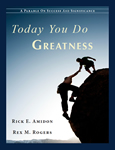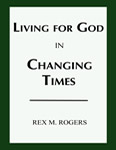Traveling to the Middle East is an experience I’d recommend to anyone. For the past ten days I visited Istanbul, Turkey; Larnaca , Cyprus; and Cairo, Egypt.
In the news virtually every day, the Middle East is the most religiously and politically strategic region in the world: 22 countries, 7 time zones, 500+ million people, 50%+ illiteracy rates, 95% Muslim, 1% of the world’s Bibles, less than 4% Christian.
Americans worry about growing political religion, yet few American Christians know much about Middle East religion, Middle Easterners as people, or how to share Christ with Middle Eastern neighbors at home or abroad (me included until a few months ago). Now I believe learning how to minister to Middle Easterners may be the defining challenge of our times. One way to learn is to travel in the Middle East.
Here are a few things I learned:
--In a nation of over 72 million people, Christians in Turkey number about 3,000 according to a recent missiological study. There are actually more Christians in Iran than Turkey. While Turkey is a secular democracy religion influences the culture. On another trip I made to Turkey a few years ago, one of our guides said, “Turkey is secular religious” meaning religion influences culture but not everyone is religious, let alone devout. Yet living the Christian life in Turkey is hard and lonely, and on a few rare occasions dangerous.
--Unity of the brethren in Turkey is very important. Consequently, “denominational-ism” is not as much of a problem in Turkey as it can be in the States. Christians need each other, so they don’t fuss as often. At the same time, Turkey has the highest turnover of Christian workers of any nation in the world, in part because it’s a fairly easy country to enter and offers certain attractions or amenities, so people come who may not really be committed. Or, people come who think it’s going to easy and it turns out to be very hard, so they leave.
--Istanbul is diverse, cosmopolitan, European in dress, food, etc, and secularized and religious but with wide variance. I saw fully covered women in all black, saw many women wearing scarves or other head-coverings, yet saw mostly Western dress, blue jeans, iPods, cell phones, teen girls as well as boys (but mostly boys) going about in packs, professionally dressed women with jobs in commercial settings. Artists and writers in Turkey make Istanbul their home. I was told that people in Istanbul focus upon play as well as work, which people in Ankara tend to focus on their government work.
--Turkey is the third highest worldwide in number of Facebook users, behind the U.S. and U.K. Internet access is good and education levels higher, including among women, more than many other Middle East countries.
--More than 300 Turkish language channels now operate in Turkey, of which maybe 110 or so are national in scope.
--One cannot fly from Turkey to Cyprus, at least not Greek Cyprus. You have to fly to the northern Turkish Cyprus because Greek Cypriots do not recognize the north as a country or legal entry point. This dates to the war between the countries in the mid-1970s. Cyprus is a divided island, and Nicosia, the capital, is a divided city.
--Cyprus probably couldn’t be more conveniently located for traveling to other Middle East and North African countries. It is a secular democracy, fairly stable, economically well-off, part of the European Union, which uses the Euro, and a Mediterranean holiday destination for many Europeans.
--In Cairo, Garbage City is a place where poor people live in squalor surrounded by foul-smelling refuse and scavenge garbage to survive. It is emotionally gut-wrenching to see. I’ve been in similar horrid places like the barrio near Santo Domingo, Dominican Republic and like the infamous dump in Manila, so I’ve seen families living in hovels amidst filth. But it’s just as ugly wherever you see such poverty.
--Within Garbage City is the Cave Church, a truly amazing illustration of God’s love and grace in the midst of human suffering. The church is difficult to describe. In the late 1960s, Egypt’s President Nassser sent about 5,000 garbage collectors, many of whom worshipped as Christians, outside the city. By 1978 a fellow named Father Simon, who still pastors today, began an outreach to these people that turned into a church, schools, hospital, and more. After worshipping for some years in the open air on the rocks near the dump, they discovered what appeared to be a cave underneath. Excavation and later pew and platform construction eventually yielded an incredible “auditorium” deep into the side of the mountain. As many as 10,000 people have attended services in this unique outdoor setting and the church thrives, ministering now to the some 65,000 or so people who live in the Garbage City area.
--The Bible Society of Egypt is blessed with a beautiful facility and the General Director Dr. Ramez Atallah is a gracious host. He is a noted Christian leader not only in Egypt but across the Middle East and in the West.
--After hearing about or seeing pictures of the Pyramids all your life, seeing them up close and personal is exciting to say the least. I went inside and up a narrow passageway to a tomb near the top of Cheops, the largest pyramid. There are about 100 pyramids in Egypt, known thus far, with artifacts and other ancient discoveries still being made every week. The Sphinx is unique, smaller than one expects, but a wonder no matter how you look at it.
--The Egyptian Museum is full of statuary 4,000 years old and older, including the famed King Tut (the Boy-King who died at 18-19 yrs after nine year reign) exhibit. The beauty and intricacy of the artistry, the amount of artifacts, including several coffins within several gold-layered wooden tomb housings, his incredible mask and sarcophaguses, the variety and number of tools, clothes, adornments, religious items, throne, beds, etc, are beyond description. Incredible. So was the Royal Mummies Hall with 12-14 male and female mummies still in repose after 3-4,500 years. Most, as one would expect, looked like a mummy—dried and brown and shrunken and abnormal. But one, Seti I, looked peacefully asleep with a smile on his countenance. He literally looked like he could awaken.
--SAT-7’s studios and offices in Egypt where Arabic programming is produced for SAT-7 Arabic and SAT-7 KIDS channels are a testimony to God’s blessing upon the ministry. I met several staff members, watched part of a live program in progress featuring two pastors answering called-in questions about the Christian faith, and in general enjoyed a great visit.
--Kasr El Dobara Church is a large and thriving evangelical congregation featuring a beautiful facility near Cairo’s center. It’s an important church doing a very significant work.
--In Cairo, men dress in Western style clothing. Women dress in Western styles, traditional outfits, and various expressions of religio-cultural strictness resulting in some with head-covering, some in dress robes, some in black robes, some in dark black robes and head-coverings with only the woman’s eyes visible through slits in the covering, and a few in dark black robes and head-coverings, including hands covered and full facial coverings. Every variety may be seen in any area of the city at any time. I saw about 8 women in total covering, including an apparently young woman at the mall sitting with a young man dressed in blue jeans and tennis shoes and playing with an iPhone. Egypt says it wants to avoid extremes of fanaticism in religion. Otherwise, the country and culture are open to differing expression.
--The Kahn El Khalili bazaar is one of the oldest and largest in the world comprised of two long main streets and several cross streets with hundreds of shops. Men hawk their wares saying, “I don’t know what you want, but I’m sure I have it.” Or, “All I want is your money, brother,” anything to get your attention. I’ve been in similar bazaars, like the one along the Via Dolorosa in Jerusalem and umpteen tourist traps in cruise ports in the Caribbean. This one is bigger, nicer, offers more locally-made goods, and more interesting.
--On several occasions I saw two older adult men or teen boys walking along holding hands. To Western eyes this is a jarring sight, but it’s purely cultural and does not mean anything untoward is going on. Apparently this practice is fading but still around. I remember when President Bush-the-younger visited a Middle East country, I forget which one, and was expected to, and did, walk about for a photo op holding hands with the country’s leader. Bush looked uncomfortable—of course he usually looks uncomfortable on camera.
--In Egypt, Muslims and Christians are buried in different Cairo cemeteries. Differences include not only the prayers offered, but Muslims are buried within 24 hours of death wrapped in cloth while Christians are buried in coffins. In Egypt, neither Muslims nor Christians are ever cremated. More interesting to me is that both are buried underground, inside structures that are built to look like houses. The result of this over time is that cemeteries look like abandoned neighborhoods. Indeed one of the most famous, along the highway, is one called the “City of the Dead,” a vast area of what looks like derelict one story homes or apartments. Muslim cemeteries also include some smaller mosques that are used like Christians use cemetery chapels to pray or as a gathering place for family and friends. Another difference is that Muslims are buried in layered graves while Christians tend to create family crypts underground that can be entered and where coffins are placed on shelf-type structures that stack coffins within the space. The City of the Dead once existed outside the city but is now surrounded by Cairo’s urban sprawl, which makes it stand out in contrast to “living neighborhoods,” if you will, when you drive by.
The population of the Middle East and North Africa is expanding rapidly at a rate of more than 7 million per year. Meanwhile, Christians are fleeing the Middle East, dropping an already small percentage even further.
As I noted earlier, learning about Middle East religion and people, and how to communicate love, forgiveness, and hope in Jesus Christ may be the greatest challenge of the new millennium. We should be leading the way.
© Rex M. Rogers – All Rights Reserved, 2010
*This blog may be reproduced in whole or in part with a full attribution statement. Contact Dr. Rogers or read more commentary on current issues and events at www.rexmrogers.com, or follow him at www.twitter.com/rexmrogers.


